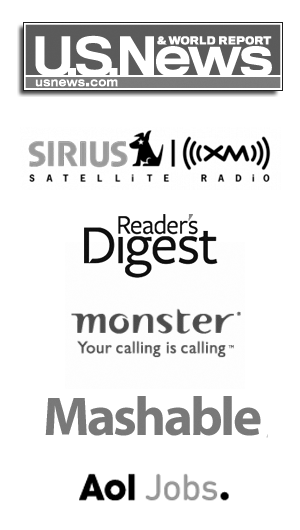A good friend of mine always says ‘you either have time, or an excuse’ and we’ve all been guilty of having one to many excuses when it comes to improving our resumes.
‘I need to set aside a good chunk of time’, ‘I need some head space to think about what I should write’, ‘There’s so much online, it’s confusing’, are just some of the ‘reasons’ we may be reluctant to sit down and work on what is possibly the single most important document in our professional life.
So, let’s banish those barriers right now: to significantly improve your resume you need just 30 minutes, your old resume open in front of you and these 5 practical tips. Let’s get stuck into it.
- Transform Your Headline Into Your Mission Statement
Time required: 3 minutes
What I’m talking about here is the professional headline that should appear at the top of your resume, usually under your name. Rather than just stating what it is that you do:
“Chief Executive Officer”
Think about how you can enhance this to demonstrate your value proposition. For example:
“Chief Executive Officer | International Business Leadership | Maximising Return”
- Be Easy On The Eye
Time required: 7 minutes
This is going back to ‘Resume Writing 101’ but so many job seekers underestimate the importance of freshness, font and format when making that first impression.
Freshness – Keep that first page clean and uncluttered. A pop of colour in the header, footer or margin can help to differentiate your resume from the rest of the black and white pile.
Think carefully, however, about your colour section. Researches have long debated the emotional responses that can be invoked by colour, but typically cool hues such as blue and greens are seen to support ideas of calm, trust, reliability and integrity.
Font – Calibri, Arial or Cambria are good style choices. Make sure the font size for the main body is never less than 11pt and if using bold to highlight key words, use sparingly to make sure you maintain the ‘pop’.
Format – Empty space in a written document is almost as important as the words. Don’t over-crowd your page, try to keep spacing at 1.15 and remove those table borders to get rid of any unnecessary clutter.
And finally – ensure that your grammar is perfect.
- Sing Solutions In Your Professional Profile
Time required: 5 minutes
One of the key mistakes I see time and time again is job seekers using their Professional Profile to talk about themselves. Yes, this piece of text needs to succinctly describe who you are, what you do and how you demonstrate credibility, but is also needs to highlight the core organisational problems that you can and have solved.
To improve your resume, change a sentence like this:
‘I am a Senior Sales Leader with over 15 years’ experience leading high-performing teams.’
Into one like this:
‘I am an energetic Senior Sales Leader with over 15 years’ success defining strategies that engage teams in traditionally high-turnover environments to exceed revenue targets and deliver market growth.
- Keyword Conundrums
Time required: 8 minutes
This section plays an important part in shaping your professional brand and/or making you easy to find by recruiters, but the format needs to change depending on your profession, level of experience and role you’re applying for.
Grid Structure – use this approach if you are in a technical field or at a level where a lot of transactional skills are required by recruiters, e.g. solution architecture, project management or financial accounting.
Bullet points – use this style if you have some key competencies and shining achievements to back them up, e.g. C-level management. When structuring these bullet points make sure you keep them to two lines and think “competency, credibility, value”. For example:
Strong people leader [competency], with demonstrable experience coordinating resource pools of 500+ [credibility] to mobilise multimillion-dollar event programs [value].
- Trim Your Responsibilities
Time required: 7 minutes
The reality is, at your level, you have a highly complex, multifaceted role. Recruiters know this and the last thing they want (or will bother reading) is a long list of all your responsibilities.
Try to limit these to 5-6 bullet points for you more recent and relevant roles and 3-4 for your earlier or less senior appointments.
When you’re editing these, think about what recruiters need to know to assess your capability for the job. That is, think key competencies, e.g. strategy, finance, communication, people leadership, continuous improvement, project management, etc.
That’s All, Folks.
That’s it! Just 5 simple steps that will significantly improve the effectiveness of your resume by at least 500% in 30 minutes. These are the same techniques which my professional resume writing team uses to craft highly effective resumes for our clients.
If you’ve completed these 5 steps, well done! You’ve banished the excuses and now have a resume that is vastly more impactful than it was before.
And if you haven’t yet started improving your resume but are still reading, I think it’s time to take out your diary and find 30 minutes over the next week to set aside for this critical exercise. The investment will be very much worth it.








